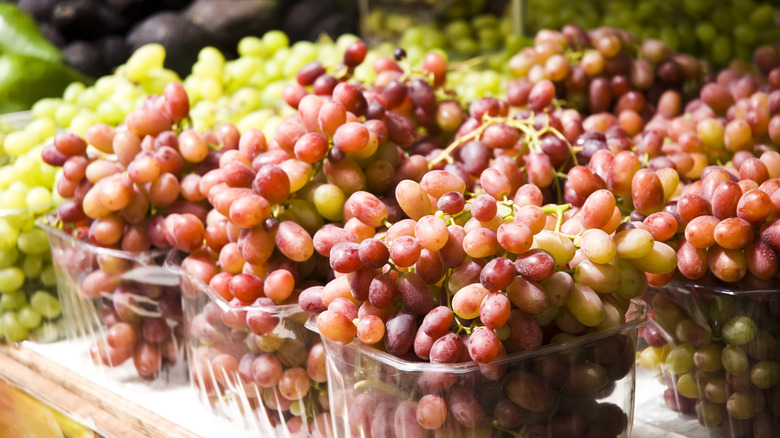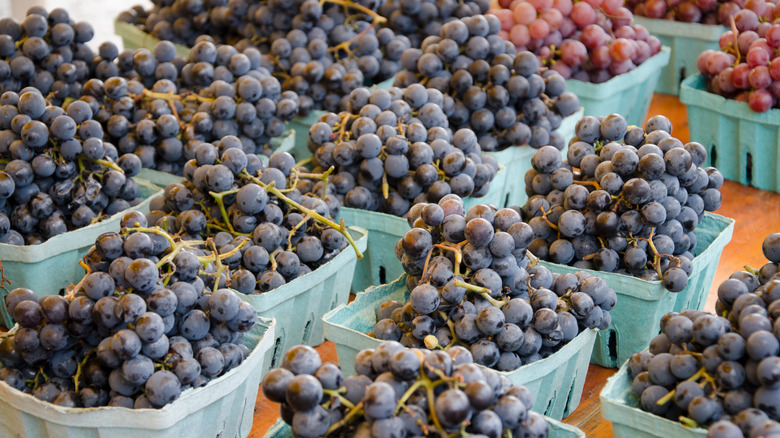The Easy Way To Pick Ripe Grapes Without Sneaking A Taste
There are lots of different types of grapes. Some are used for winemaking, while others are just for eating and are referred to as table grapes. A few grape varieties include concord, cotton candy, moon drops, black muscat, and centennial, per Healthline. Grapes have a lot of health benefits too. They are high in vitamin C, may help reduce high blood pressure and high cholesterol, and might provide extra protection against diabetes and the risk of certain cancers and heart disease, according to Cleveland Clinic. Additionally, grapes are good for supporting healthy brain function, minimizing signs of aging, and could improve sleep and bone health.
Whether it's at a farmer's market, grocery store, or home garden, there are a few criteria to consider when picking grapes. While the easiest way to check if grapes are ripe or not is by simply tasting them, this may not be a viable or acceptable option every time. Luckily, there are other ways you can test grapes for ripeness without having to sneak a taste.
Use your other senses to find the perfect bunch
In order to find the best grapes, there are three things to look and feel for: color, state of the grapes themselves, and the bloom (via Sun World). For color, make sure the grapes are vibrant; green grapes should be yellowish green, red grapes should be richly red, and black grapes should be dark black. If the grapes' color is too light or pale, this is a sign they aren't quite ripe.
The next thing to check for is how the grapes and stems feel. Ripe grapes shouldn't be wrinkled. A good test for this is to give a few grapes a slight squeeze. In doing so, you should find ripe grapes to be plump and firm. In other words, their skin will have a tightness to it. The grape stem shouldn't be frail or crisp, but it should be vibrant green and able to bend without breaking. If you grab the bunch by the stem, ripe grapes should be firmly secured to the stem.
Another thing to look for when picking grapes is a white, powder-like substance covering the grapes. This is known as the bloom, and it's something the grapes create on their own as protection against rot and excessive loss of moisture. Lastly, be aware of the smell (per Master Class). Ripe grapes have virtually no smell, so if they have a strong, sour smell then that's a sign that the grapes have gone bad.

